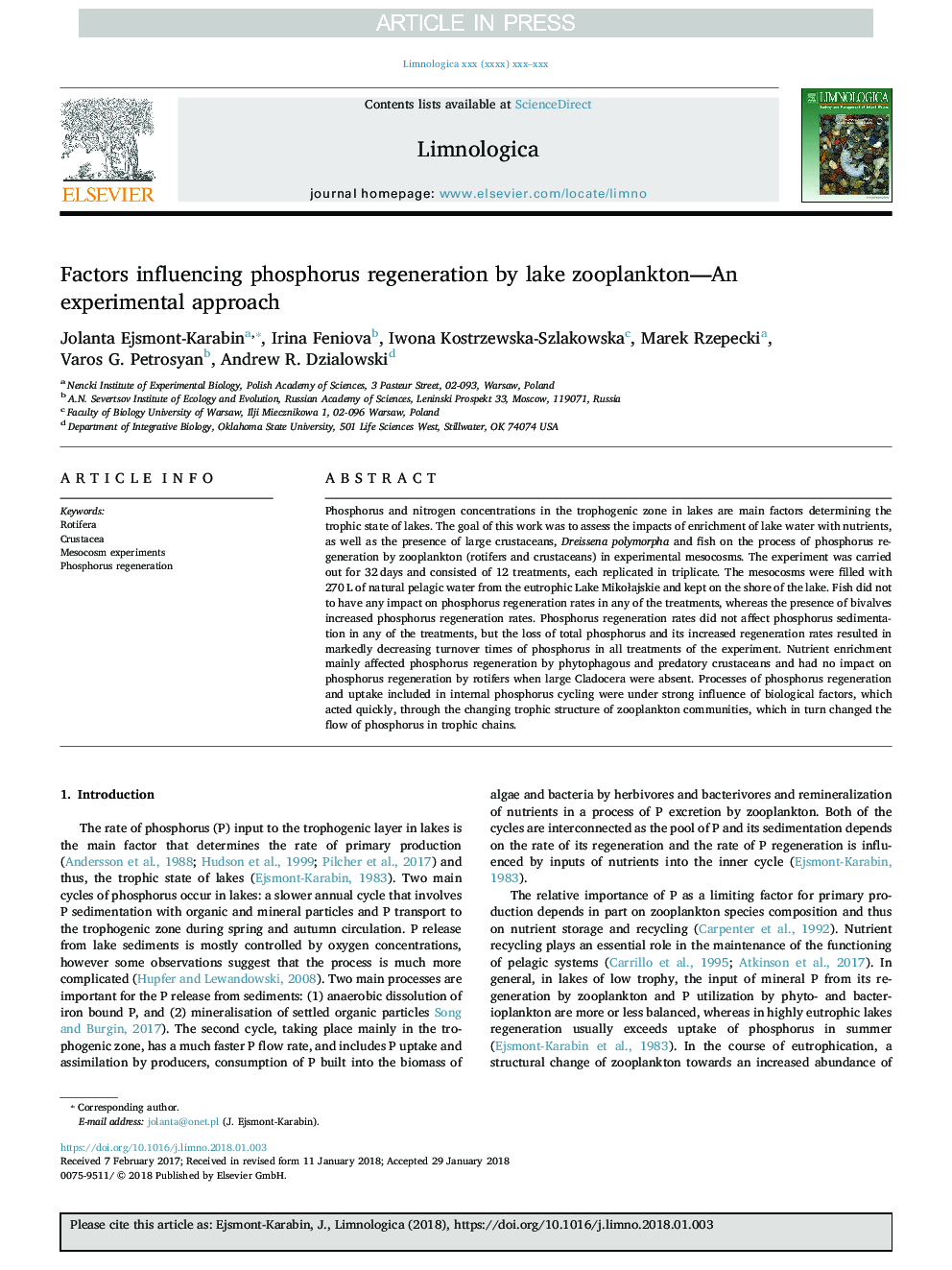| Article ID | Journal | Published Year | Pages | File Type |
|---|---|---|---|---|
| 8849378 | Limnologica - Ecology and Management of Inland Waters | 2018 | 7 Pages |
Abstract
Phosphorus and nitrogen concentrations in the trophogenic zone in lakes are main factors determining the trophic state of lakes. The goal of this work was to assess the impacts of enrichment of lake water with nutrients, as well as the presence of large crustaceans, Dreissena polymorpha and fish on the process of phosphorus regeneration by zooplankton (rotifers and crustaceans) in experimental mesocosms. The experiment was carried out for 32â¯days and consisted of 12 treatments, each replicated in triplicate. The mesocosms were filled with 270â¯L of natural pelagic water from the eutrophic Lake MikoÅajskie and kept on the shore of the lake. Fish did not to have any impact on phosphorus regeneration rates in any of the treatments, whereas the presence of bivalves increased phosphorus regeneration rates. Phosphorus regeneration rates did not affect phosphorus sedimentation in any of the treatments, but the loss of total phosphorus and its increased regeneration rates resulted in markedly decreasing turnover times of phosphorus in all treatments of the experiment. Nutrient enrichment mainly affected phosphorus regeneration by phytophagous and predatory crustaceans and had no impact on phosphorus regeneration by rotifers when large Cladocera were absent. Processes of phosphorus regeneration and uptake included in internal phosphorus cycling were under strong influence of biological factors, which acted quickly, through the changing trophic structure of zooplankton communities, which in turn changed the flow of phosphorus in trophic chains.
Related Topics
Life Sciences
Agricultural and Biological Sciences
Aquatic Science
Authors
Jolanta Ejsmont-Karabin, Irina Feniova, Iwona Kostrzewska-Szlakowska, Marek Rzepecki, Varos G. Petrosyan, Andrew R. Dzialowski,
